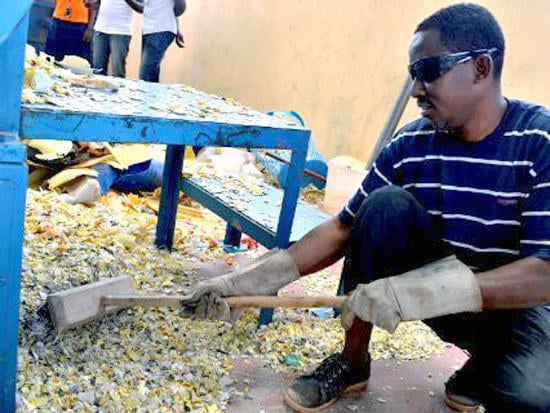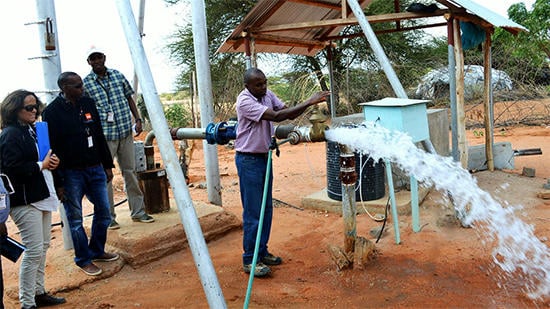
Through various approaches and competencies, they are able to gain knowledge through new information technology, tap into and utilise available and renewable natural resources and convert waste products into marketable matter while at the same time keeping their environment clean.
New technology in education
The Instant Network School Project is an exciting technological innovation that aims to bring solutions in addressing challenges facing the education programme across Dadaab refugee camps through the use of creative technology. The instant network classroom makes use of 10-inch WIFI enabled android tablets, a combination of solar power, batteries and back-up as sources of power and connects to a server by means of a mobile network or satellite.
Educational content is regularly uploaded on to the server system including text books PDF versions of national curriculum and interactive Apps such as Google for Education. These are meant for learning and exam revision, video access, Wikipedia and World-Reader among others. Content management process involves local content upload on to server and establishing online educational platform from where teachers can select content. Initial and continuous training of coaches and IT support team, including technical structuring of classroom environment and school agenda form part of the capacity building process. The initiative targets three main areas for improvement: formal education, vocational training and community e-learning.
Recycling plastic waste
 Photo. NRC
Photo. NRC
A powerful idea of recycling plastic waste for industrial consumption while working towards a greener environment has inspired action towards establishment of a highly successful recycling plant at the Hagadera refugee camp in Dadaab Refugee Camp in, Kenya. Waste materials collected from households by the local community and from public spaces by community workers are sorted and graded before being transferred to a shredder that breaks down the material into granules which are packed and sold as raw material to industrial manufacturers.
The project, initially set up in 2012 is managed on a daily basis by the Refugee Recycling Income Group (RRIG), a Hagadera-based community-based organisation, generating income from the sale of shredded plastic waste product. The group earns 15 Kenya Shillings (0.3 US Dollars) per kilogramme of packed product. The project has contributed significantly to the reduction of plastic waste in Hagadera and beyond, improving the overall solid waste, hygiene and sanitation situation.
Solar energy for water provision

The solar-powered water distribution system was piloted in Dadaab in 2013 in Hagadera, followed by successful completion in March 2014. The system uses solar energy opump water from under the surface and is able to serve a population of 8,000 refugees in Hagadera. Throught its large capacity solar-powered pump it produces an average of 160 cubic metres per day against a dynamic head of 150 metres.
Cost assessments proved that the system was able to fully repay its investment capital within an approximate 5-year period. Unlike diesel-operated boreholes, the solar technology accumulates an annual saving of USD 20,000.
These examples demonstrate that Dadaab refugee camp is not always about doom and gloom occasioned by displacement. There are many activities taking place that can be replicated by other refugee camps in Africa and across the globe.



